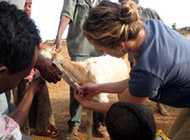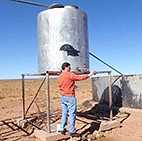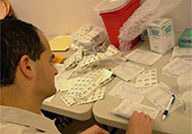Success Stories
CDC launches updated Harmful Algal Blooms (HABs) website and the One Health Harmful Algal Bloom System
 Just in time for this seasons’ blooms, the U.S. Centers for Disease Control and Prevention (CDC) launched a new national reporting system for harmful algal blooms (HABS), called One Health Harmful Algal Bloom System (OHHABS). OHHABS provides an electronic platform for state public health departments to report human and animal illnesses resulting from exposure to HABs.
Just in time for this seasons’ blooms, the U.S. Centers for Disease Control and Prevention (CDC) launched a new national reporting system for harmful algal blooms (HABS), called One Health Harmful Algal Bloom System (OHHABS). OHHABS provides an electronic platform for state public health departments to report human and animal illnesses resulting from exposure to HABs.
E-cigarette study sparks national attention around e-cigarettes and nicotine toxicity
Rise in Colorado ED visits launches epi investigation associated with synthetic marijuana
Epi team links national outbreak of liver failure, acute hepatitis to dietary supplements
Epi investigation finds steroid-laced vitamins and minerals; Purity First offers product recalls
 In March 2013, the New York State Department of Health (NYSDOH) began investigating an unusual cluster of symptoms among persons taking dietary supplements from a single manufacturer, Purity First. Reported health effects varied, ranging from unusual hair growth in women, to fatigue, muscle pain, and anxiety. Some patients had elevated liver enzymes and cholesterol levels.
In March 2013, the New York State Department of Health (NYSDOH) began investigating an unusual cluster of symptoms among persons taking dietary supplements from a single manufacturer, Purity First. Reported health effects varied, ranging from unusual hair growth in women, to fatigue, muscle pain, and anxiety. Some patients had elevated liver enzymes and cholesterol levels.
Disaster Epi: HSB staff's field experience boosts national data reporting
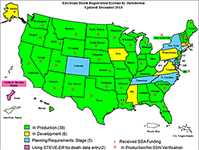 You often hear about the importance of electronic medical records and electronic health records, but what about electronic death records? In a disaster, prompt and accurate recording of death certificates are critical for effective post-disaster surveillance. Until recent CDC efforts, however, timely and accurate vital records lagged far behind what public health and communities in distress need.
You often hear about the importance of electronic medical records and electronic health records, but what about electronic death records? In a disaster, prompt and accurate recording of death certificates are critical for effective post-disaster surveillance. Until recent CDC efforts, however, timely and accurate vital records lagged far behind what public health and communities in distress need.
Commander Noe embodies never-give-up spirit: 2015 Nurse Responder of the Year
 On any given vacation day, you might find Commander Rebecca S. Noe in Alaska exploring the frozen, snowy peaks or hiking the hot, dusty trails at the Grand Canyon. Extreme weather and rigorous environmental challenges are what make this dual-trained scientist – both a nurse and an epidemiologist – tick.
On any given vacation day, you might find Commander Rebecca S. Noe in Alaska exploring the frozen, snowy peaks or hiking the hot, dusty trails at the Grand Canyon. Extreme weather and rigorous environmental challenges are what make this dual-trained scientist – both a nurse and an epidemiologist – tick.
CDC awards iFund Challenge for Innovation
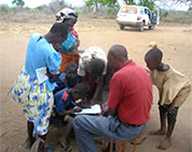 Kenya experiences extreme aflatoxin exposure and fatal, recurring aflatoxicosis outbreaks. They urgently need evidence-based interventions. One promising intervention is NovaSil clay. After it is ingested, NovaSil binds to aflatoxin and prevents it from being absorbed into the body. A team from NCEH’s Health Studies Branch wants to test the use of NovaSil clay tablets to block the ravaging effects of aflatoxin.
Kenya experiences extreme aflatoxin exposure and fatal, recurring aflatoxicosis outbreaks. They urgently need evidence-based interventions. One promising intervention is NovaSil clay. After it is ingested, NovaSil binds to aflatoxin and prevents it from being absorbed into the body. A team from NCEH’s Health Studies Branch wants to test the use of NovaSil clay tablets to block the ravaging effects of aflatoxin.
Disease Detectives in Ethiopia, Part 1
Disease Detectives in Ethiopia, Part 2
Children’s Poisoning from Laundry Detergent Pods
Navajo Nation Safe Drinking Water Initiatives
Panama’s Mystery Illness
- Page last reviewed: August 12, 2013
- Page last updated: October 25, 2016
- Content source:


 ShareCompartir
ShareCompartir




